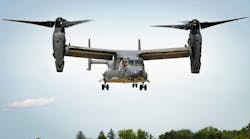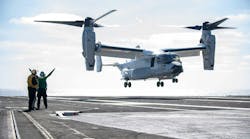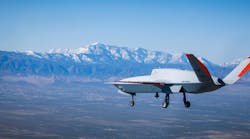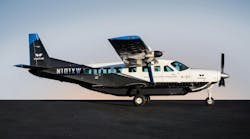Dec. 02--Not too long ago, fighter jets regularly roared off the runway at the Marine Corps air station at Kaneohe Bay.
In 1986 five TA-4F Skyhawks and nearly three dozen F-4S Phantoms were based there.
By 1991 there were 34 F/A-18C Hornets on the Mokapu Peninsula, according to Marine Corps figures.
"You got used to them (fighter jets) being in the pattern over Kaneohe Bay," said Kailua resident Burl Burlingame, curator of the Pacific Aviation Museum Pearl Harbor on Ford Island.
That's not the case anymore.
Hornet fighters still make visits, particularly during biennial Rim of the Pacific war games, but the space-constrained air station is evolving into a helipad.
Evidence of that comes in the Navy's plan to eliminate its P-3C Orion surveillance and sub-hunting propeller planes at Kaneohe Bay, the arrival of Marine Corps Super Cobra attack and Huey utility helicopters, and anticipation of 24 MV-22 tilt-rotor Ospreys in the not-too-distant future.
It's all good news for the Marines.
"The Osprey, in addition to the recent addition of the UH-1 Huey and AH-1 Cobra, establishes a complete Marine Air Ground Task Force in Hawaii, allowing Marines to train, operate and respond to crises across the region," said Marine Corps Base Hawaii commander Col. Brian Annichiarico.
Annichiarico added that as the Marine Corps adjusts its forces to meet new Pacific requirements, Marine Corps Base Hawaii and its air station are experiencing a change in the aircraft based here.
The air station was home to fighter jet squadrons from the 1950s to the 1990s.
A dramatic shift to the rotorcraft side of the equation is coming with the Navy's decision not to move to Kaneohe Bay three squadrons of 18 P-8A Poseidon jets based on the Boeing 737-800.
The jets would have replaced the nearly 30 aging P-3C Orions in four squadrons that are used in surveillance and reconnaissance missions around the world, the Navy said.
But in a cost-cutting move, the Navy now plans to locate six P-8A fleet squadrons and a fleet replacement squadron at Naval Air Station Jacksonville in Florida, six P-8A squadrons at Naval Air Station Whidbey Island in Washington state, and none in Hawaii.
A P-8A presence would be maintained here with a detachment of two aircraft and 102 personnel rotating through Hawaii every two weeks, according to the Navy.
Navy Region Hawaii public affairs said the P-3s, which were designed as Cold War-era sub-hunters and have been a fixture in the state since the 1960s when they were at Barbers Point, will begin a gradual transition out of Hawaii in fiscal 2015, eventually being completely phased out here.
Three P-3 patrol squadrons are located at Kaneohe Bay: VP-4, VP-9 and VP-47, along with a "special projects" squadron, VPU-2, which operates clandestinely and which the Navy plans to discontinue before 2020.
Kaneohe Bay has nearly reached its full contingent of Cobra and Huey helicopters, meanwhile.
Marine Light Attack Helicopter Squadron 367, which is known as "Scarface," was established in Hawaii in September 2012.
The Marine Corps base said the full compliment of Cobras -- 14 -- are on base, along with seven of nine Hueys and 350 unit personnel.
A dozen big CH-53E Super Stallion cargo and troop-carrying helicopters remain at Kaneohe Bay, and the Navy has 10 SH-60 Seahawks at the base with Helicopter Anti-Submarine Light 37, a number expected to grow to 14 over the next two years.
The two squadrons of 24 total MV-22 Ospreys are expected to arrive in 2015 and 2016, meanwhile.
Between Ospreys and helicopters, the base will be home to at least 73 rotorcraft.
"The aircraft flying over Hawaii may be changing, (but) our mission remains the same: to provide relevant, stabilizing forward presence that deters conflict and, when necessary, fight and win to protect our nation's interests," Annichiarico said.
The Air Force is expected to continue using the Marine Corps runway for touch-and-go operations for its C-17 cargo jets, one of the significant sources of jet noise around the base.
Copyright 2013 - The Honolulu Star-Advertiser




